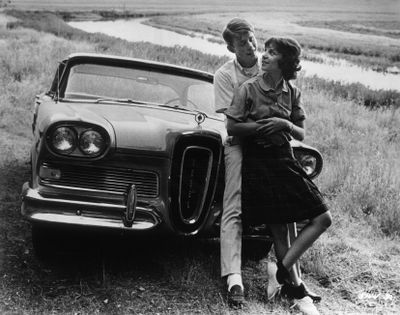‘American Graffiti’ remains a resonant gem

After success directing “The Godfather,” (1972) Francis Ford Coppola, came aboard as the producer for the 1973 film “American Graffiti,” saving the film from being butchered.
Universal Pictures decided to edit “American Graffiti” so it could be a television movie. Director George Lucas had objected, but Coppola had considerable power over the film, which follows the classic coming of age story of a group of teens in 1962, set in Modesto, California.
Coppola and Lucas were close friends; he encouraged Lucas – who had one film under his belt at the time, a forgettable sci-fi film, “THX 1138” – to create a movie that is warm and relatable.
Lucas and fellow screenwriters Gloria Katz and Willard Huyck nailed it, and “American Graffiti” became one of the most beloved and profitable movies at the time. The film earned more than $140 million with a budget just under $800,000.
Katz and Huyck tried to talk Lucas out of a sad ending in which two of the film’s characters die in 1964: Terry (Charles Martin Smith) in Vietnam and John (Paul Le Mat) by a drunk driver. But it was about the end of innocence for Lucas. In 1963, everything would change with the assassination of President John F. Kennedy. America would never be the same and that goes for the high school graduates from “American Graffiti,” who enter adulthood by enrolling in college, the military or the workforce. That’s part of the reason “American Graffiti” remains resonant a half-century after its release.
There is still something about the characters navigating their way through the last night of summer during their final night as kids in California. Lucas made the most out of a low budget.
Lucas shot anywhere from six to 10 script pages a night, which is twice the norm. Due to limited dollars, Lucas couldn’t use Elvis Presley tunes. Lucas also didn’t use a traditional score instead opting for popular music he could afford.
But the greatest asset from Lucas was his experiences growing up in Modesto during the early ‘60s. The “American Graffiti” script is terrific and Lucas shot the film quickly and dealt with some wild young actors. The word on the set was that Le Mat and Bo Hopkins were rabble rousers. But it was a very youthful cast with the exception of 30-year-old Harrison Ford, who almost passed on the role because he made more money as a carpenter but came aboard after Lucas increased his salary.
Lucas has always been known as stubborn. After being saddled with a limited budget, the Universal executives demanded Lucas change the name of the film to “Another Slow Night in Modesto” but the future “Star Wars” director insisted on “American Graffiti,” an excellent moniker over a terrible title. Who would ever pay to see a film with the words “Slow Night” in the title?
Lucas assembled a great soundtrack, which sold over three million copies. The film spawned an unnecessary sequel, “More American Graffiti,” which was released in 1979. The follow-up isn’t horrible. It’s just superfluous.
The entire story was told on that wistful night and it’s one of the finest films about the period between high school and the next step in life. I’m experiencing it with my son Milo, who recently turned 18 and is about to go to college. Milo reminds me of the “American Graffiti” protagonist Curt, played perfectly by Richard Dreyfuss, as he spends his last days with his friends, who are happily looking back and reluctantly peeking forward.
“American Graffiti” is one of the greatest coming of age films along with “The Graduate,” Richard Linklater’s “Dazed and Confused” and “Everybody Wants Some” and the underrated gem “Booksmart.”